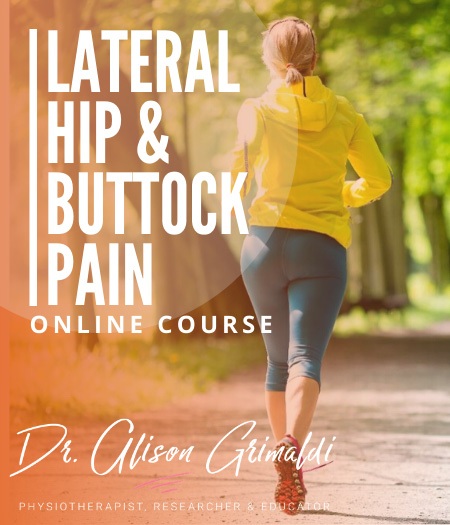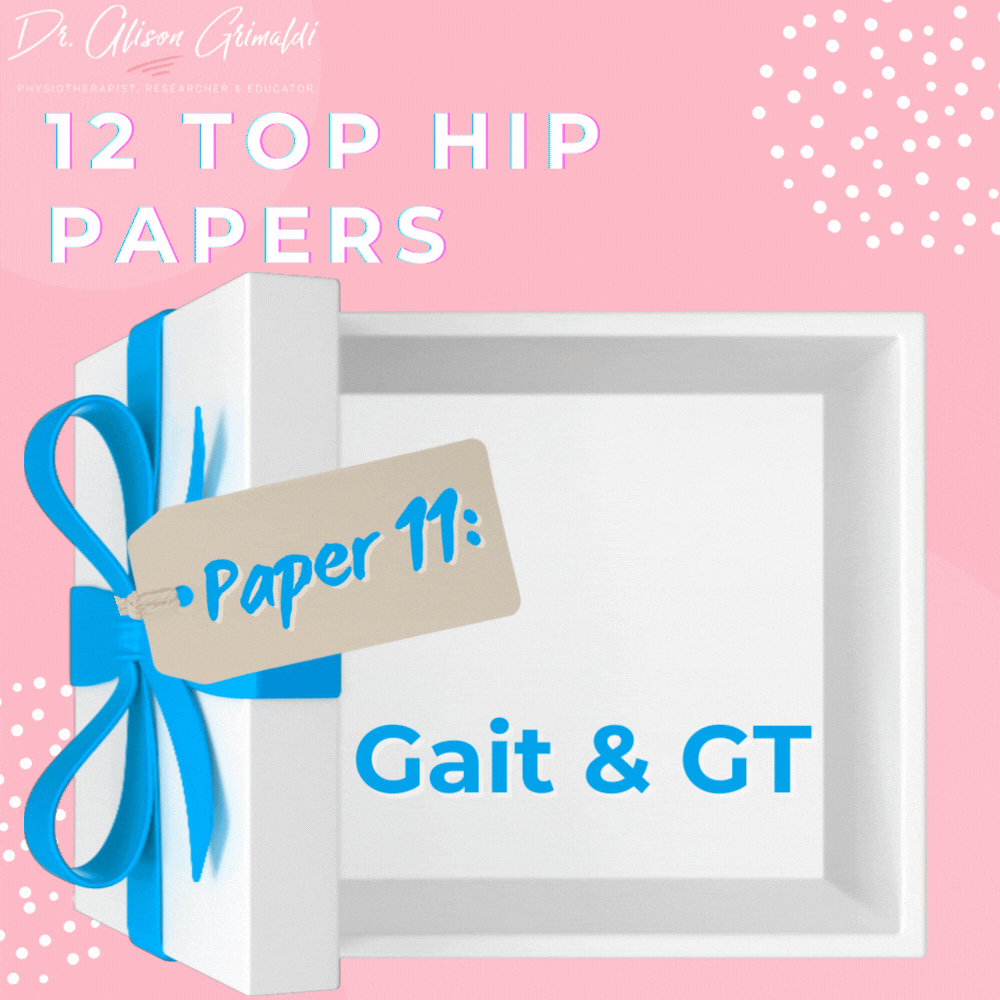12 of 12 Top Hip Papers – Best treatment for gluteal tendinopathy

Here we are, the final day of my 12 Top Hip Papers miniblogs series. I hope you have enjoyed this series that aimed to highlight some really meaningful contributions, but let me say that there are many more great papers. There were some hard decisions on which papers would make it to the 12 Top Hip Papers, but I wanted to deliver you papers on some varied topics as those with hip pain may present with a wide variety of conditions. Thank you to all the authors of the first 11 papers presented in this series - your contributions are much appreciated by the wider community. And for day 12, I am featuring a paper very close to my heart, a paper where I was able to contribute to the development of a successful education and exercise protocol tested within this RCT for gluteal tendinopathy (+/- trochanteric bursitis, aka greater trochanteric pain syndrome). Thank you so much to all the amazing people who worked so hard to bring this trial to fruition and especially to Professor Bill Vicenzino, chief investigator, who saw the value of this project and enabled us to show that compared with corticosteroid injection and wait and see, education and exercise is the best treatment for gluteal tendinopathy. I hope you enjoy my final infographic and key learnings.

For your convenience, we have also developed this content into a FREE 26-page full colour ebook!
Packed full of 12 Top Hip Papers - peer reviewed scientific papers that have contributed to our understanding of hip conditions and/or the assessment or management of hip pain or injury.
PAPER 12: Education plus exercise versus corticosteroid injection use versus a wait and see approach on global outcome and pain from gluteal tendinopathy: prospective, single blinded, randomised clinical trial
Gluteal tendinopathy is highly prevalent, particularly in post-menopausal women, with one study finding that this was most common tendinopathy with which patients presented to their general medical practitioner. It has an impact on quality of life similar to end stage hip osteoarthritis. Corticosteroid injection (CSI) is the most common first line medical management for this condition, despite evidence showing high recurrence rates and the potential for adverse effects on soft tissues.
Prior to the LEAP study (our paper for today), there had only been one prospective trial that included exercise. The exercise group did not fare better than the corticosteroid group until the 15-month time point, so it is not surprising that patients and medical practitioners regularly opt for the ‘quick fix’ of cortisone. Unfortunately, cortisone doesn’t really ‘fix’ the condition or address any of the underlying or associated impairments.
The LEAP trial finally provided strong evidence that a contemporary load management and exercise program is more successful than CSI in both the long AND SHORT TERM. Great evidence for physiotherapists and rehab professionals to take to their referring medical practitioners, with the request to refer for an education and exercise program as first-line management for gluteal tendinopathy.

Key learnings about the best treatment for gluteal tendinopathy:
- Based on a Global Rating of Change measure, those participants with gluteal tendinopathy who were provided with load management and exercise had significantly greater rates of success than the CSI and Wait and see groups in both the short and long term.
- In the short term, better reductions in pain were observed for the EDX group compared with the other groups, meaning that EDX and not CSI is the preferred option for early intervention, particularly considering the other advantages of an EDX approach.
- Analysis of secondary outcomes revealed that those in the EDX group reported
- less Pain Constancy (at 8 & 52 weeks),
- better Pain Self Efficacy (at 8 weeks), and
- better Quality of Life (at 8 & 52 weeks)
than those in the corticosteroid injection and wait and see groups.
It is important to note that this study shows that the LEAP protocol has high levels of success, not that any education and exercise program will be more effective than CSI or wait and see. There is not yet clarity in how much this program can be varied and still achieve such results.
My tips:
- be familiar with the details of this program and apply with as much fidelity as possible,
- alter the program as required for the individual’s comorbidities and situation (availability, finance (for private services), and proximity to services)
- encourage high compliance (LEAP compliance was >90%).
Further research is starting soon to test a streamlined version of the program, so in the coming years we will hopefully have even more information to direct clinical practice.
If you'd like to learn more about gluteal tendinopathy, you can choose to take a course, read an ebook, order a physical book, or attend a workshop. All online hip courses and ebooks are included in Hip Academy, so if you have a wider interest, you might like to join me in Hip Academy.
Another great Lateral Hip Pain blog

Lateral Hip Pain: Causes, Diagnosis, and Treatment

Join Hip Academy Today
Join Hip Academy Today
By becoming a member today you can enjoy the benefits of a world class educational Hip Program, specifically designed by Dr Alison Grimaldi to help improve your knowledge surrounding the Hip and Pelvis, and become an expert in your field.
By becoming a member today you can enjoy the benefits of a world class educational Hip Program, specifically designed by Dr Alison Grimaldi to help improve your knowledge surrounding the Hip and Pelvis, and become an expert in your field.
Like to learn more about assessment and treatment of patients with gluteal tendinopathy?
In this self directed, online course, you can find detailed information on pathoaetiology, assessment and management of lateral hip pain associated with gluteal tendinopathy and many other conditions. This course is also included in Hip Academy membership.
Like to attend a live workshop on assessment and treatment of patients with lateral hip & buttock pain, including gluteal tendinopathy?
The workshop format provides further practical application of this content, either face-to-face or online. All workshops include 3 months access to the online course of the same name. Hip Academy members receive a discount on online workshops.
If you have gluteal tendinopathy or trochanteric bursitis yourself (pain over the side of the hip), you can find my self-help course here: Recovering from Gluteal Tendinopathy, Trochanteric Bursitis and Greater Trochanteric Pain Syndrome
Reference



